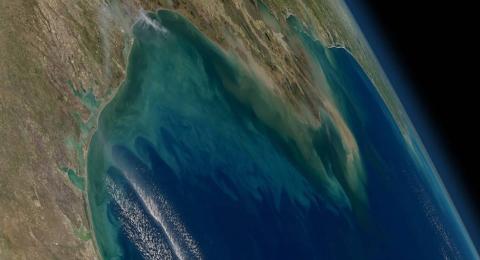Overview
The Geostationary Littoral Imaging and Monitoring Radiometer (GLIMR), a hyperspectral ocean color sensor targets the Gulf of Mexico and other coastal and ocean waters of North and South America. With its vantage point from geostationary orbit, GLIMR will be the first hyperspectral ocean color sensor in the Western Hemisphere to study ocean processes at the diurnal timescales required to observe the dynamic ecological, biogeochemical and physical processes typical of coastal and ocean waters.
GLIMR is uniquely designed to capture the spatio-temporal evolution of phytoplankton blooms, which grow and dissipate on scales of hours to days, monitor phytoplankton physiology, growth rates and shifts in community composition, resolve coastal features, fronts, eddies and upwelling features, and monitor biogeochemical fluxes and land-ocean exchanges at sub-diurnal to multi-day scales.
The two main science goals of GLIMR are to:
1. Understand the processes contributing to rapid changes in phytoplankton growth rate and community composition.
2. Quantify how high frequency fluxes of sediments, organic matter, and other materials between and within coastal ecosystems regulate the productivity and health of coastal ecosystems.
